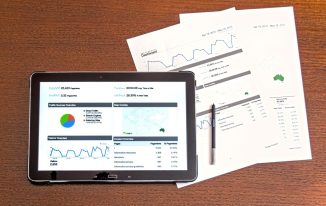In today’s data-driven world, organizations are realizing the immense value of having robust data governance practices in place. Data governance software plays a crucial role in managing and protecting valuable organizational data. However, integrating this software with existing systems can be a complex process. This article will explore some key considerations and best practices for seamlessly integrating data governance software into your organization’s existing systems.
Understanding the Importance of Data Governance
Before diving into the intricacies of integrating data governance software, it is essential to understand the significance of data governance itself. Data governance refers to the overall management of data policies, procedures, and practices within an organization. It ensures that the right people have access to accurate and timely data while maintaining its integrity, confidentiality, and compliance.
Data governance software enables organizations to establish standards and guidelines for managing their data effectively. It provides tools and functionalities that facilitate data quality assessment, metadata management, policy enforcement, and more. By implementing a robust data governance framework with the help of such software, organizations can derive valuable insights from their data while mitigating risks.
Challenges in Integrating Data Governance Software
Integrating any new software or technology with existing systems can present several challenges that organizations need to overcome for successful implementation. When it comes to integrating data governance software specifically, some common challenges include:
- Complex System Structures:
Existing systems within an organization often have intricate structures with various databases, applications, and platforms operating independently. Integrating these systems with data governance software requires careful planning to ensure compatibility across different elements. - Data Silos:
Many organizations struggle with disparate datasets dispersed across different departments or divisions—also known as data silos. Integrating these siloed datasets into a centralized platform supported by the chosen data governance software is essential for creating a comprehensive view of organizational data. - Lack of Technical Expertise:
Implementing any new technology involves technical expertise that may be lacking within the organization. Integrating data governance software may require specific knowledge about data architecture, security protocols, and system integration methods. - Resistance to Change:
Integrating data governance software often necessitates changes in existing processes and workflows. Resistance to change from employees can pose challenges during implementation.
Best Practices for Seamless Integration
While the integration process may seem daunting, there are several best practices you can follow to ensure a seamless integration of your data governance software with your existing systems:
- Clearly Define Goals and Objectives:
Before embarking on the integration journey, clearly define your goals and objectives. Understand how the data governance software will support your organization’s overall data strategy and align it with your business requirements. - Conduct a Comprehensive System Analysis:
Perform a thorough analysis of your existing systems, including their architecture, databases, applications, and interfaces. Identify potential points of integration with the data governance software and assess any necessary modifications or upgrades required. - Ensure Data Consistency:
Centralizing organizational data is crucial for accurate reporting and analysis. During integration, work towards eliminating redundant or inconsistent datasets by identifying sources of truth across various systems. This step will help maintain consistent and reliable data within the integrated platform. - Fill in Metadata Gaps:
Metadata provides context to your organization’s data attributes, definitions, and relationships. To facilitate the effective utilization of metadata management capabilities provided by the chosen software, it is important to identify pertinent gaps in metadata during integration. Adding this missing metadata ensures comprehensive documentation of the entire dataset. - Secure Data Integration Channels:
The integration process involves exchanging sensitive information between departments or even with third-party applications. Secure API connections, shielded by robust authentication, ensure that data is transmitted safely and that only authorized personnel have access to sensitive information. - Plan for a Phased Integration:
Integrating an advanced data governance management system should be done gradually. The implementation team should work closely with stakeholders to ensure a high-quality, collaborative effort. Follow a well-defined plan, identifying specific milestones and timelines for each phase of the integration.
Conclusion
Integrating data governance software with existing systems is crucial for maximizing the potential of organizational data. By addressing key challenges and following best practices—such as clearly defining goals, conducting comprehensive system analysis, ensuring data consistency, filling gaps in metadata, securing integration channels, and planning for a phased integration—organizations can seamlessly integrate data governance software into their existing systems. This integration enhances the effectiveness of data governance efforts, leading to better decision-making and improved overall data management strategies.



